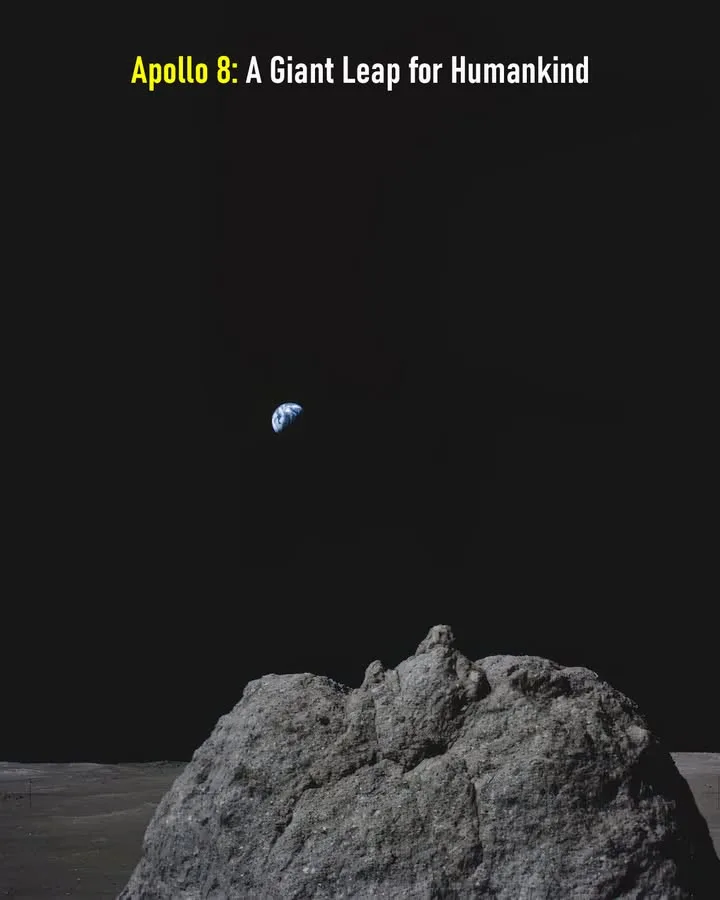In the turbulent year of 1968, as the world grappled with war and social upheaval, a beacon of hope and human ingenuity soared into the cosmos. Apollo 8, crewed by the steadfast Frank Borman, the experienced James Lovell, and the insightful William Anders, embarked on a mission so daring and unprecedented that it redefined the boundaries of human endeavor. Their journey to orbit the Moon was not just a pivotal moment in space exploration; it was a testament to human courage, a technological triumph, and a deeply moving experience for a world watching with bated breath.

The Cold War Space Race and a Bold Gambit
The late 1960s were characterized by the intense rivalry of the Cold War, with the space race serving as a highly visible arena for demonstrating technological superiority. The United States, determined to fulfill President John F. Kennedy’s ambitious goal of landing a man on the Moon before the end of the decade, faced the looming prospect of the Soviet Union achieving a circumlunar flight first.
The decision to send Apollo 8 on a lunar orbital mission was a bold and somewhat risky deviation from the original Apollo program plan. The spacecraft and the massive Saturn V rocket had undergone limited crewed testing in low Earth orbit. Skipping several intermediate steps to attempt a lunar orbit was a testament to the urgency of the situation and the confidence in the engineering and the astronauts.
On December 21, 1968, the powerful Saturn V roared to life, carrying Borman, Lovell, and Anders on their historic journey. The translunar injection burn was executed flawlessly, propelling them towards the Moon at speeds exceeding 24,000 miles per hour. For three days, they traversed the quarter-million miles, conducting system checks and preparing for the critical maneuvers ahead.
Into Lunar Orbit: A World Transfixed
The world held its breath as Apollo 8 approached the Moon. The crucial Lunar Orbit Insertion (LOI) burn had to be timed perfectly and execute flawlessly. A failure would mean either a slingshot trajectory past the Moon and into deep space or a catastrophic crash. On Christmas Eve, the spacecraft fired its service module engine for over four minutes, successfully entering lunar orbit.
For the next 20 hours, Apollo 8 circled the Moon ten times, at an altitude of about 69 miles. The astronauts were the first humans to witness the far side of the Moon, a cratered and mysterious terrain never before seen directly by human eyes. They meticulously photographed the lunar surface, gathering crucial data for future landing sites.
But it was the images of Earth rising above the lunar horizon that captivated the world. “Earthrise,” captured in vibrant color by William Anders, became an iconic symbol of our planet’s fragility and interconnectedness. It offered a profound shift in perspective, showing Earth as a solitary oasis of life in the vast emptiness of space. This single photograph is credited with contributing significantly to the burgeoning environmental movement, underscoring the preciousness and finite nature of our home.
“For All the People on Earth, Merry Christmas”
The mission reached its emotional peak on Christmas Eve night. As they orbited the Moon for the fourth time, the crew broadcast live television images back to Earth. In a moment that transcended the Cold War rivalry, Borman, Lovell, and Anders took turns reading the first ten verses of the Book of Genesis. Their calm voices, juxtaposed with the stark reality of their location hundreds of thousands of miles from home, resonated deeply with a global audience estimated at one billion people.
Frank Borman concluded the broadcast with the simple yet profound words: “Good night, good luck, Merry Christmas – and God bless all of you, all of you on the good Earth.”
Paving the Way for Humanity’s Giant Leap
The return journey was just as critical. The Trans-Earth Injection (TEI) burn had to be executed with precision to send them on the correct trajectory back to Earth. After another three days of travel, Apollo 8 splashed down safely in the Pacific Ocean on December 27, 1968.
The success of Apollo 8 was a monumental achievement. It proved the viability of lunar navigation, the reliability of the Apollo spacecraft systems in deep space, and the resilience of the human spirit in the face of the unknown. The mission provided invaluable experience and data that were crucial for the subsequent Apollo missions, ultimately leading to Neil Armstrong’s “one small step” on the lunar surface just seven months later.
Apollo 8 stands as a powerful reminder of humanity’s capacity for innovation, courage, and unity in the pursuit of extraordinary goals. The iconic image of Earthrise and the crew’s Christmas Eve message continue to inspire awe and reflection, solidifying Apollo 8’s place as a pivotal and deeply human moment in the grand narrative of space exploration.


